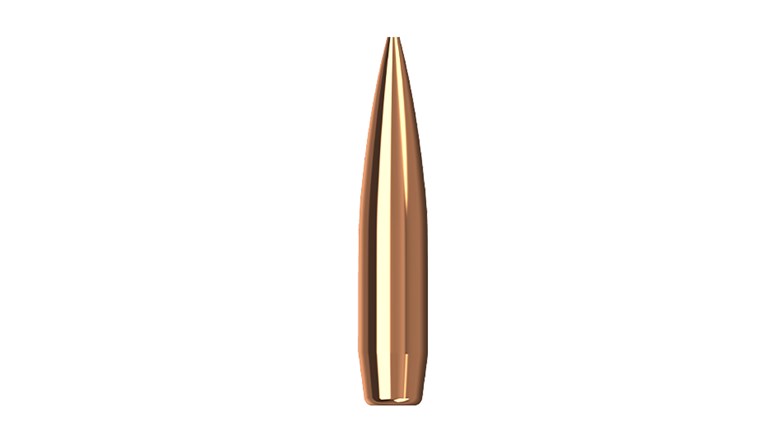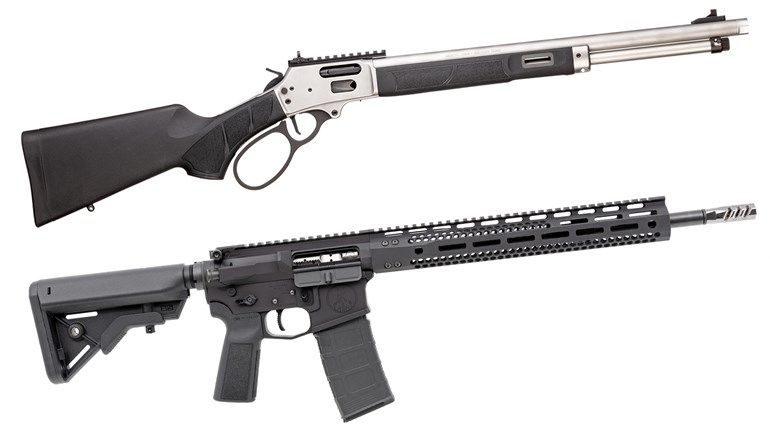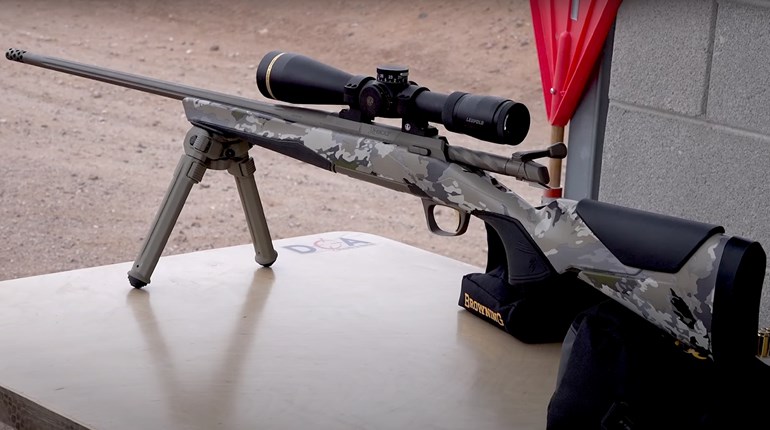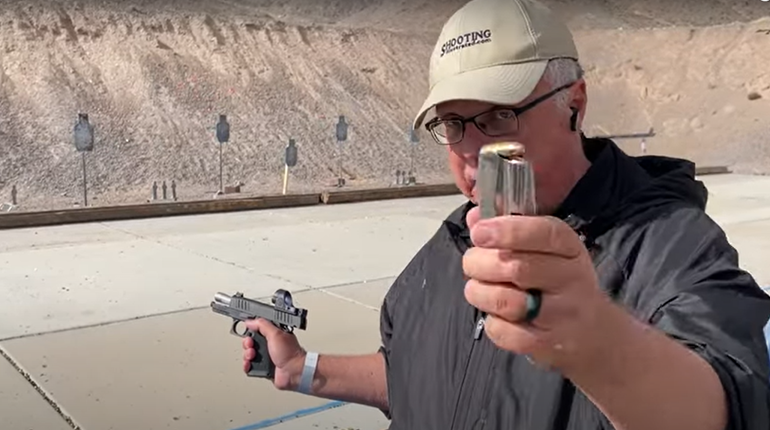
Any serious student of whitetail hunting knows there are two or three magic days each year when the bucks are on the move and you must be hunting no matter what.
Yeah, well, something always comes up on those days. No matter how much I plan and schedule, the dark forces conspire against me and it seems like I am any place except a deer stand. What many of those experts forget to tell you is there’s another multi-day period in the rut cycle when deer activity grinds to a halt. Those are the days I always spend in a stand.
That was the case with my hunt last year in South Carolina with legendary rifle maker Kenny Jarrett at his Cowden Plantation. Kenny’s son Jay runs the hunting and did his best, but Towsley’s Luck prevailed.
In most locations the vast majority of deer will breed in a very short period of time. The does come into estrus and the bucks forsake all else to be with the does. Deer movement shuts down and sightings all but dry up. One good indicator this is happening is when all you are seeing are little bucks. The bucks and does are staying deep in the thick swamps. The big boys drive the little bucks away, so 11/2-year-olds wander around like dumb little teenagers with hurt feelings.
On top of that, I hit a period of record cold in South Carolina that slowed deer movement even more. Plus, I think there was a full moon and at least two witch doctors and a voodoo priestess all casting dark spells on every one of my stands.
 I know they have a lot of big bucks; they were all over the trail-camera photos. Guys were shooting them left and right until I showed up, and no doubt the day I left was the best day of hunting ever recorded in the history of South Carolina. But for the duration of that hunt, my personal black cloud hung low and ominous over my head.
I know they have a lot of big bucks; they were all over the trail-camera photos. Guys were shooting them left and right until I showed up, and no doubt the day I left was the best day of hunting ever recorded in the history of South Carolina. But for the duration of that hunt, my personal black cloud hung low and ominous over my head.
The upside is I was there to do more than just hunt. Kenny invented the Beanfield Rifle and started a revolution of long-range hunting that continues today. He is a legend with gun guys, and I wanted to learn a little of what he knows.
I have always had mixed feelings about long-range deer hunting. As a rifleman and a competitive shooter, I realize the difficulty of long-range shooting at any target. I know if you develop the skills and have the right equipment it is ethical to shoot deer at some pretty long distances. My reluctance in writing about it concerns a large and lazy faction out there who thinks they can shoot deer at long range without paying their dues. They believe if they buy the right gear, they don’t need to learn the skills, and I hate to encourage those guys.
On the other hand, long-range hunting is here to stay; it can’t be ignored. So, why not explore it, write about it and try to help hunters understand what it takes to do it right? Kenny and Jay had a lot of information and insight into what it takes to shoot well at long range. During the down times I picked their brains and then put it into action on their 1,000-yard range.
■■■
Long-range shooting is impossible without an accurate rifle. While accurate rifles are not as uncommon today as they were a generation ago, few hunting rifles can compete with a full-blown Jarrett rifle. The Jarretts make their own button-rifled barrels and hand-lap them to ensure the bore diameter varies by no more than 1/10,000th of an inch. They also make their own uniquely designed Tri-Lock action. When assembled with hand-crafted precision, their rifles are some of the most accurate on the market. (They can also turn your current rifle into a precision machine and save the cost of the action.)
Jarrett Rifles can chamber a rifle for any of 90 different cartridges, but the .300 Jarrett is by far the top choice. It was developed by Kenny to work with his Beanfield Rifle, and the combination pretty much launched the long-range hunting revolution.
The .300 Jarrett is based on an 8mm Remington case. This full-length magnum cartridge generates a muzzle velocity of 3550 fps with a 150-grain bullet and 3250 fps with a 180-grain bullet. When chambered in a Jarrett rifle, the accuracy is outstanding. Actually that’s understating it a bit. The Jarrett Signature model rifle I used on the South Carolina hunt shot three, three-shot, 100-yard groups that measured .245 inch, .313 inch and .392 inch. That’s an average of .316 inch—pretty outstanding accuracy from a hunting rifle on its first test drive using factory ammo.
I shot that rifle at 600 yards under the worst mirage conditions I have ever encountered and still managed to hold most of the groups to 3 inches, or half a minute of angle (MOA). I could easily keep those groups centered on the target using the 600-yard horizontal line of the Zeiss Rapid-Z 800 scope reticle.
The reason you need an accurate rifle for long-range hunting is simple.
Let’s compare a rifle that will shoot .3 MOA (I rounded off to make the math easier) to most out-of-the-box, mass-produced rifles that shoot about 1.5 MOA. Sure, some rifles are much better, but I have tested hundreds over the last three decades and I think 1.5 MOA is being a bit generous concerning the overall average.
Let’s say the kill zone on a deer is a 6-inch circle, which is pretty much the accepted standard. With no other variations or any of the thousands of other things that can go wrong, a rifleman with a 1.5-MOA rifle cannot certainly hit the deer’s kill zone past 400 yards. At that distance the threshold for a 1.5-MOA rifle to hit a 6-inch target every time is exceeded. That’s a best-case scenario based solely on the math. In the real world, the distance will be shorter almost without fail, and that rifle is probably not reliable much past 350 yards. Yet with a .3-MOA rifle like this Jarrett, the accuracy is good enough to theoretically hit a 6-inch kill zone at 2,000 yards. Of course, that is not an endorsement of shooting that far at game, but clearly it’s much easier to hit a deer at reasonable ranges with an accurate rifle. Even at 1,000 yards, still too far to shoot at game in my opinion, the rifle is capable of 3-inch accuracy. At 500 yards, which many believe is an ethical distance to consider shooting at a deer, the gun is capable of keeping all its bullets in a 1.5-inch group. In other words, the Jarrett rifle I hunted with was as accurate at 500 yards as the average out-of-the-box rifle is at 100 yards.
■■■
What really changed long-range shooting is laser rangefinders. Before they came along we were guessing at distances and nobody was all that good at it. Today, rangefinders give you the precise range, which becomes exponentially more important as the distance to the target increases. Remember that the acceleration of gravity constantly increases the rate the bullet drops by a factor of 32 feet per second, per second. The longer the time in flight, the faster the bullet drops.
With the .300 Jarrett, an exceptionally fast hunting cartridge, it takes a full second for the bullet to travel 806 yards. It crosses the half-second line at 462 yards. That means at 806 yards the bullet is dropping more than twice as fast as it was at 462 yards. This rate of drop increases exponentially as time in flight increases. So the farther you shoot, the more critical it becomes to know the exact distance to the target.
Let’s look at some long-range ballistics using a .300 Jarrett with a 180-grain Barnes TTSX bullet and a muzzle velocity of 3250 fps. With a 250-yard zero, the bullet will strike 1.99 inches high at 100 yards and 2.86 inches low at 300 yards. So we can be off on our distance calculation and still have no problem hitting a 6-inch zone out to 300 yards.
The bullet has dropped less than 3 inches in the 50 yards from 250 to 300 yards, yet at 350 yards the bullet strikes 6.96 inches low, so it’s dropped an additional 4.1 inches from the line of sight during the 50 yards from 300 to 350. The drop grows as the time in flight ages. By the time we are at 500 yards, that acceleration of gravity is really kicking in. From 500 to 550 yards the bullet drops another 10.2 inches off the line of sight, which is more than three and a half times as much as the same bullet dropped in the 50 yards from 250 to 300. If you are stretching out, the bullet will drop an additional 13.71 inches from 600 to 650 yards, almost five times as much as the drop from 250 to 300 yards. So you can see the longer the shot, the more critical it becomes to know the exact distance to the target, as an error of just a few yards in range can cause a miss or a wounding loss.
■■■
You must also know exactly where to hold on the target at any given distance. There are two schools of thought on that subject in current use: hold-over and dial-up. (We are not even dealing with wind here; that’s a very involved topic for another day.)
The technique for dial-up involves changing the adjustments in your scope to compensate for the distance. Suppose your rangefinder says the target is at 400 yards, and you have a 200-yard zero. A .300 Jarrett with a 180-grain bullet is going to impact 15.81 inches low. Your scope has quarter-MOA clicks; that means you move it four clicks to adjust for 1 MOA, which is 1.047 inches at 100 yards. At 400 yards, one click will equal 1.047 inches, as an MOA at 400 yards is 4.188 inches, so you click the scope up 16 clicks and aim where you want to hit the deer. Simple, right?
But what if the deer is at 485 yards? How many clicks do you dial up now? The drop is 29.08 inches, but how many quarter-MOA clicks is that? Well, 1 MOA at 485 yards is 5.08 inches. So now each quarter-MOA click will be 1.27 inches. That means you need to dial up 22.9 clicks. Call it 23 clicks. Pretty cool, right? Dial up, hold dead center and hit the target.
But how are you going to figure that out when a big buck is standing out there? It took me several minutes at my desk with a ballistic program and a calculator to come up with that number. By the time you figure it out the deer will probably have moved out to 527 yards, or whatever, and you will need to start over.
Dial-up works best if you have a set, known distance to the target and all the time in the world to do the math. Deer don’t always play by the rules and wait around. Then there is the problem of counting the clicks under stress. If you mess up and lose count, unless you have a return-to-zero stop you may never know what zero the rifle is adjusted for until you go back to the range and shoot some paper targets.
It’s a lot to remember and execute in a stressful, fast-breaking situation. It can be done, experienced shooters do it all the time, but is it the best option? I never thought so, but I asked Kenny about it one night over dinner. He was adamant that by far the best option for a long-range hunter is to use a ballistic reticle and hold-over.
“I know the scopes are getting better and better all the time,” Kenny said. “We test them all; that’s one reason I have a 1,000-yard range on my property. It has been my experience that no scope is 100 percent positive in precisely changing the internal adjustments every single time under every single condition. Remember, hunters operate under very extreme conditions. A scope that is reliable at the range on a June day in the high 70s might not be as reliable at 10-below zero. If it fails even once and that once is while you are shooting at the Marco Polo sheep you just spent $40,000 to hunt, or if it’s the biggest whitetail you have ever seen, then once is too often.”
Kenny continued: “When you use the reticle and hold-over technique, you are not depending on anything mechanical moving so it can’t get stuck or fail. Using hold-over with the reticle does not depend on gears and clicks and little delicate parts moving to adjust for a longer shot. If the scope is correctly zeroed and you know your hold-overs there is not much to go wrong.”
I might also add that, with practice, it is much faster to get into play than dialing up. If you have done your homework and know your hold-overs, it’s simply a matter of ranging the deer and using the correct, pre-determined aiming point in the reticle. Nothing is faster for long-range shooting.
The key is in how you adjust your zero and how the corresponding aiming points on the descending leg of the reticle match up with the distances you will be shooting. I normally just adjust for a 200-yard zero, and then shoot targets at various distances to learn where the other aiming points are zeroed and write them down. Until Jay showed me a better way.
We were shooting on the 1,000-yard range and adjusting the zero on the Zeiss Conquest HD5 with which I was hunting. The scope had the Zeiss Rapid-Z 800 ballistic reticle.
“We work with a lot of high-end scopes, and one brand that we recommend for our rifles is Zeiss,” Jay said. “The optics are extremely clear, which is critical for long-range shooting. They are mechanically sound and tough as well, and they stand up to extreme hunting conditions. But perhaps the best reason is that the Rapid-Z 800 reticle works dead-on with our .300 Jarrett and the Barnes 180-grain TTSX bullet.”
I was shooting Barnes 180-grain TTSX bullets. Jay showed me how to zero at 300 yards using the first line below the crosshair with the scope at 25X. We fine-tuned that a little bit by shooting at 500 yards. The point of impact was a little off at 500, so we tweaked the zero to center the groups. Then I went back and checked at 300 by shooting another group and found that it was centered, which made me wonder if I was off a little at that range to start with.
Next we checked at every distance from 300 out to 800 yards to make sure the holds for each horizontal bar on the descending leg of the reticle would place shots on the target. It turned out that each numbered bar lined up with its appropriate target as distance increased by 100-yard intervals. Bar 4 provided the perfect hold for 400 yards, bar 5 for 500 yards, and so on. I was able to hold on the targets out to 800 yards. Then we went back and shot at 100 and 200 yards to confirm where the point of impact was at those distances. In this case it was .89 inch high at 100, and the main crosshair was zeroed at 200.
This technique will work with most cartridges and ballistic reticles. But the Rapid-Z 800 takes it to a new level. With a second-focal-plane reticle like the Zeiss Conquest HD5 has, you can adjust the magnification of the scope until the bars match the ballistics of your cartridge and bullet. That’s because with a non-magnified, second-focal-plane reticle, the size of the reticle relative to the target changes as the target is magnified. Much of this information is on the Zeiss website in the company’s ballistic calculator, which can help you find the magnification setting that matches your cartridge and bullet.
Of course, you must always prove it by shooting. Once you find the magnification level that matches your cartridge and bullet to the reticle, you can make a mark on the scope with a felt-tipped pen so you can dial to that magnification instantly. For example, the same Barnes bullet in a .300 Winchester Magnum matches up with the Rapid-Z 800 reticle at 20X and a .30-06 works at 16X. This technique will work with any second-focal-plane ballistic reticle. But the Zeiss Rapid-Z has the advantage of the online ballistic calculator to find your starting point.
When it’s time to shoot, if the range is not exactly a 100-yard increment—and it rarely is—just use the reticle. A smaller aiming point between the numbered bars in the Rapid-Z 800 helps. If the shot is 450 yards, aim with the hash mark between the 400- and 500-yard bars. If it’s 475, split the difference between the middle mark and the 500-yard bar. Simple, easy and fast. But you need to put in some time on the range to make sure your adjustments and hold-overs are perfect.
The rules of long-range hunting have changed. With lots of practice, an accurate rifle, a flat-shooting cartridge, the right optics and a laser rangefinder it’s now ethical to shoot at deer at distances that were impossible a generation ago. Now if somebody would just change the rules of deer behavior, maybe I could put it all to use, because I am going back to Cowden Plantation for a rematch this fall.
Editor’s Note: For more information on Jarrett Rifles and the Cowden Plantation, contact Jarrett Rifles in Jackson, S.C., at 803-471-3616; or visit them online. If you are planning a visit, call ahead and schedule a tour of the Jarrett Museum, an amazing collection of Civil War artifacts and firearms. To learn more about Zeiss riflescopes click here. To put the company’s ballistic calculator to work, go here.






































